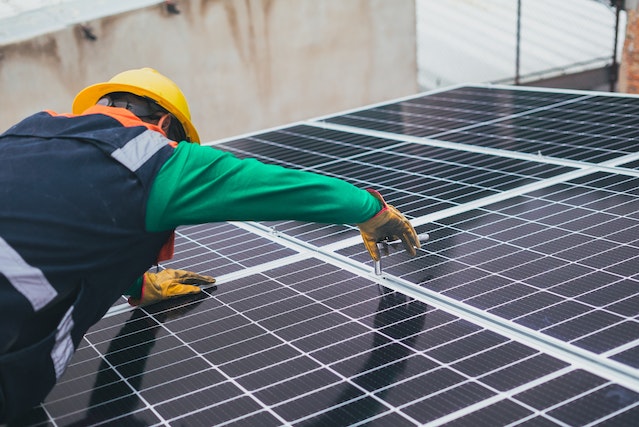The U.S. Treasury Department and the Internal Revenue Service (IRS) have released proposed rules and FAQs on key provisions in the Inflation Reduction Act to ensure clean energy jobs are good-paying jobs and that the country is preparing a diverse pipeline of workers to maximize the opportunities created by the Inflation Reduction Act’s investments.
The Inflation Reduction Act’s prevailing wage and registered apprenticeship requirements apply to many of the clean energy deployment tax incentives under the law, including for the clean energy investment and production tax credits that help finance utility-scale wind, solar and battery storage projects. If the prevailing wage and registered apprenticeship requirements are satisfied, a taxpayer can claim an enhanced credit or deduction equal to up to five times the value of the regular credit or deduction.
While prevailing wage and apprenticeship requirements have existed for more than 100 years and have long applied to projects supported by federal contracts, the Inflation Reduction Act applied these requirements to clean energy tax incentives for the first time. The requirements have been in effect since January 29 – 60 days after Treasury and the IRS released initial guidance – but the proposed rules in the just published Notice of Proposed Rulemaking (NPRM) would provide employers and workers with more clarity and direction on proposed IRS guardrails, incentivize employers to adopt worker-centric practices and ensure compliance is streamlined.
Importantly, the Treasury Department’s guidance, which was developed in consultation with the U.S. Labor Department, contains new proposed rules regarding how to correct failures to meet the requirements and substantiate compliance to ensure workers are well-paid and expand the clean energy workforce. The proposed rules would also provide incentives for taxpayers to use qualifying Project Labor Agreements that meet certain criteria to meet the prevailing wage and apprenticeship requirements, enabling this well-established tool to be used more extensively in the clean energy industry.
This guidance marks the end of the first phase of the Treasury Department’s implementation of the Inflation Reduction Act’s clean energy provisions, along with proposed rules and other guidance on the consumer clean vehicle credit, the energy communities bonus, the domestic content bonus, the low-income communities allocated bonus and direct pay and transferability. These provisions represent the core elements needed to accelerate significant economic and climate benefits and to provide clarity and certainty to companies and other entities planning investments and projects.
For most Inflation Reduction Act incentives, including the Production Tax Credit, the Investment Tax Credit and the credits for Carbon Oxide Sequestration and Clean Hydrogen, taxpayers will need to meet both prevailing wage and registered apprenticeship requirements to receive the increased credit or deduction amount.
Treasury and the IRS will carefully consider public feedback before issuing final rules.




